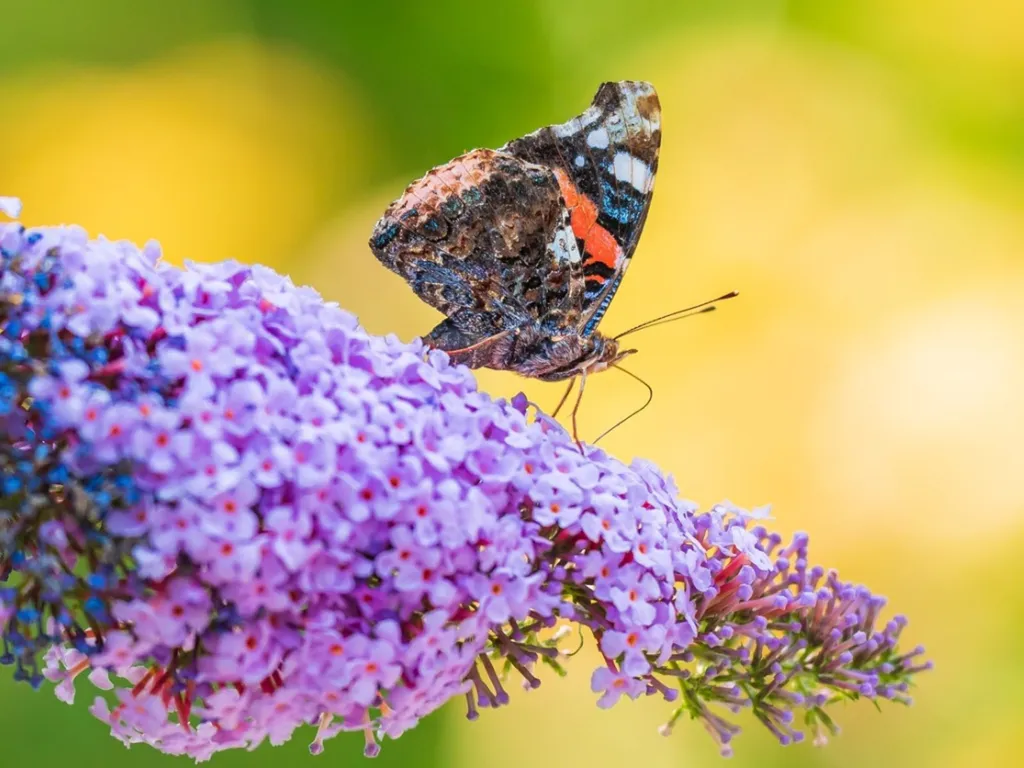Planting a garden offers numerous benefits, such as creating a habitat for butterflies and other beneficial insects. A well-maintained butterfly garden provides nourishment, water, and shelter for native butterflies while offering a serene space filled with beautiful fluttering friends. Additionally, it helps support the local climate and its inhabitants. This guide provides all the necessary information for planting a butterfly garden, including preferred butterfly plants and the importance of avoiding harmful insecticides. So, grab your trowel and seeds, and start designing your enchanting butterfly garden.
#1 Choose the Right Flowers
To attract butterflies to your garden, you have a wide range of flower options, whether you’re planting in containers or garden beds. When selecting flowers for butterflies, it’s important to choose blooms that are suitable for your region and that promote pollination.
Here are some popular types of flowers:
- Milkweed is critical for the life cycle of monarch butterflies, as it is the only flower that can support monarch caterpillars. There are various milkweed species, so find out which types thrive in your area and plant them generously.
- Coneflowers are another excellent option. These purple flowers are native to the central and eastern regions of the U.S. and are loved by butterflies.
- Black-eyed Susan, a type of coneflower, is particularly attractive to several butterfly species. Its vibrant yellow petals with a black center make it visually appealing to butterflies and other pollinators.
- Lavender, known for its fragrance, is also loved by many butterfly species. It requires minimal care and can be planted early in the spring for beautiful blooms throughout the summer. In the fall, you can even cut off dried stems for a lovely centerpiece that will last all year.
To find the perfect flowers, you can use planning tools. One of the best is Plant identifier & Care-Lily. It has filters, a lot of supporting information, and the ability to find or identify different plants.
#2 Plan your garden
Arrange trees, buildings, fences, decking, paths, and buildings effortlessly with a drag-and-drop interface to design your garden and landscape. For all this you need a Garden Planner. The planner assists in laying out a vegetable garden to maximize your space. Try the free trial to get hands-on experience with the reasonably-priced design software, and receive future updates at no extra cost.
Perhaps you need inspiration for the perfect garden planning. You have many sources of inspiration: from nature to films. One of the most inspiring shows I’ve seen in a long time is I Am Shauna Rae. You can watch I Am Shauna Rae and try to find inspiration for your garden or flower selection. Don’t underestimate the importance of the emotions with which you planned the garden. You will remember them for a long time, and it’s good if they are pleasant memories.
#3 Analyze the condition of the soil
The condition of the soil is a key factor in whether a plant can take root and feel comfortable or not. You can use My Soil to help with this issue. This soil analysis app determines the conditions of your soil and provides recommendations for optimal plant selection in your garden, guaranteeing flawless planting and vibrant blooms every time. Ideal for beginners or those uncertain about how a specific species will thrive.
All of the listed applications are not unique, they are simply some of the best in their category. If you can’t find one of them, you can simply look for an analogue or change your region.
#4 Find the Perfect Plants
Butterflies are attracted not only to flowers but also to other types of plants. Native trees, shrubs, and herbs that are well-suited to the climate and soil of your area are worth considering. Choose plants that directly benefit the local butterfly species by providing food and shelter.
Plants that offer food for butterflies include:
- Elm trees
- Oak trees
- Willow trees
- Hackberry trees
- Sassafras
- Mint
- Dill
- Parsley
- Almond verbena
- Rosemary
- Honeysuckle
- Buckthorn
To provide shelter for butterflies, consider these plants with large leaves:
- Ivy
- Buttonbush
- Spicebush
- Serviceberry
- Evergreen sumac
- Fragrant sumac
- red mulberry
For this you will need Garden Plan Pro – it is one of the best design apps. It allows you to create your virtual garden, plan it, and only then bring it to life.
Conclusion
Celebrate and support the pollinators we heavily rely on by creating a butterfly garden when you plant. Not only does it contribute to your local ecosystem, but it also grants you a personal butterfly habitat for observation, learning, and appreciation. Moreover, this is not so difficult to do with the help of the listed applications.

Leave a Reply